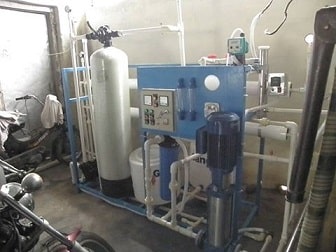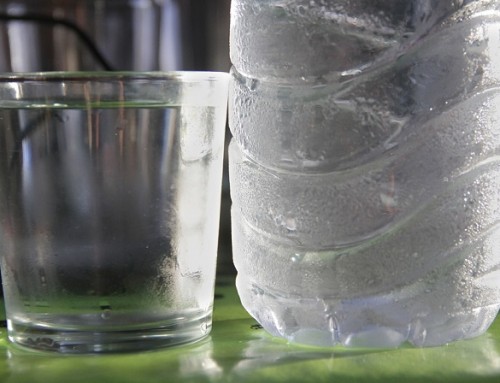 Reverse osmosis (RO) water filtration – good grief, it sounds like something out of a science fiction novel. Actually it is something that is done right here on earth every day, and is not that complicated to understand.
Reverse osmosis (RO) water filtration – good grief, it sounds like something out of a science fiction novel. Actually it is something that is done right here on earth every day, and is not that complicated to understand.
If one thinks about the following lines from a poem called The Rime of the Ancient Mariner by Samuel Taylor Coleridge
[source: Poetry Foundation], you will be on the right track:
Water, water, every where,
And all the boards did shrink;
Water, water, every where,
Nor any drop to drink.
Yes, reverse osmosis is a process that makes taking the salt out of sea water (desalination) possible. Desalination is not that easy though, it involves quite a bit of manipulation.
Reverse osmosis is also used to treat waste water, for recycling and even to produce energy. Water treatment plants and systems are using reverse osmosis to address the pressing issues of problems and environmental impacts caused by climate change, such as droughts, torrential flooding, and rising and falling sea levels.
Overpopulation, a history of not treating the planet right, wastage, pollution, industrialisation and many other factors are putting earth’s water supply under great stress. If we do not attend to this problem, we will simply run out of potable water; this means we will not have drinking water or water to maintain hygiene with. As the body is 70% water, we have to have sufficient water to drink in order to perform optimally.
According to the International Desalination Association, there are currently in excess of 13,000 reverse osmosis plants [source: The Economist] all over the world; Perth, Australia, for instance supplies approximately 17% of the area’s drinking water from reverse osmosis.
How Does Reverse Osmosis Work?
Reverse osmosis is the passage or diffusion of water or other solvents through a semi-permeable membrane that blocks the passage of dissolved solutes [source: Encyclopedia Britannica].
Osmosis is a natural process wherein when two fluids that have different concentrations of a solute are passed through a semi-permeable membrane, the fluid will move from a lower to a higher solute concentration in order to counterbalance the chemicals.
To put that is plain old everyday English that all of us can understand; reverse osmosis is a method used to produce pure water:
- A solvent (in this case water) passes through a semi-permeable membrane (think Gore-Tex, a waterproof/breathable fabric membrane from which a variety of water resistant clothing is made.)
- An applied pressure is used to overcome osmotic pressure, which will remove many types of ions and molecules from solutions such as salt water.
- The solute remains on the pressurised side of the membrane while the pure solvent through to the other side.
- Reverse osmosis necessitates a diffusive mechanism, which means that the separation efficiency depends on pressure, solute concentration and the water flux rate.
- The movement of the pure solvent is driven so that it equalises the solute concentrations on either side of a membrane, which generates osmotic pressure.
Reverse Osmosis Water Filtration
Reverse osmosis water filtration involves:
- Having a saltwater solution on one side of a large tank and fresh water on the other side
- Separating the two sides with a hand-cast membrane made from cellular acetate
- Applying about 50-60 bars of pressure [source: Lenntech] to the saltwater of the tank
- This will counteract the natural osmotic pressure from the pure water side
- This action pushes the saltwater through the semi-permeable membrane
- The salt molecules are too big to go through the membrane, so only fresh water will join the water on the other side of the membrane
A small example of reverse osmosis water filtration can be found in water filters that are used when camping to purify river water to drink and wash in.
Reverse osmosis is not only used for water filtration purposes; it is also used to purify rainwater collected from storm drains to be used for landscape irrigation and industrial cooling. Reverse osmosis is also used in industry to remove minerals from boiler water at power plants and to clean brackish and effluent water.
Source:
Rent water coolers and purchase water coolers online from Living-Water in London. Get bottled water coolers and mains water coolers for your home or office.





